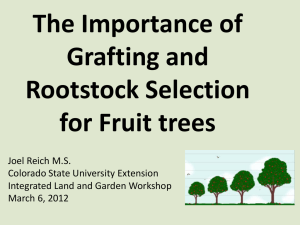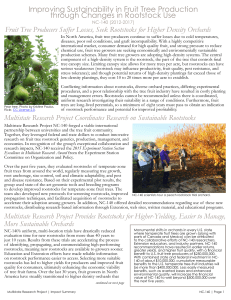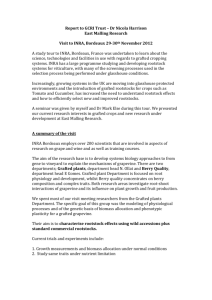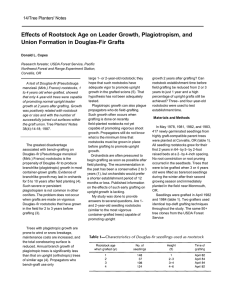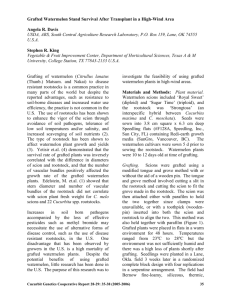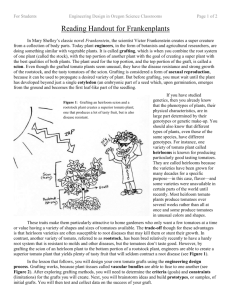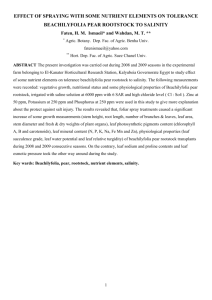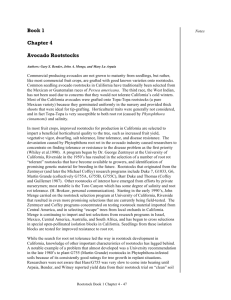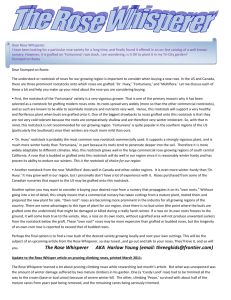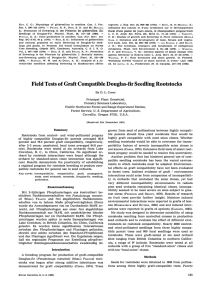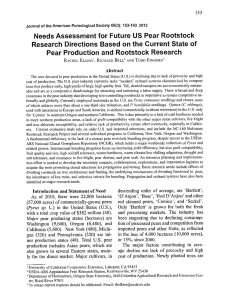Searching for the perfect northern Apple rootstock
advertisement
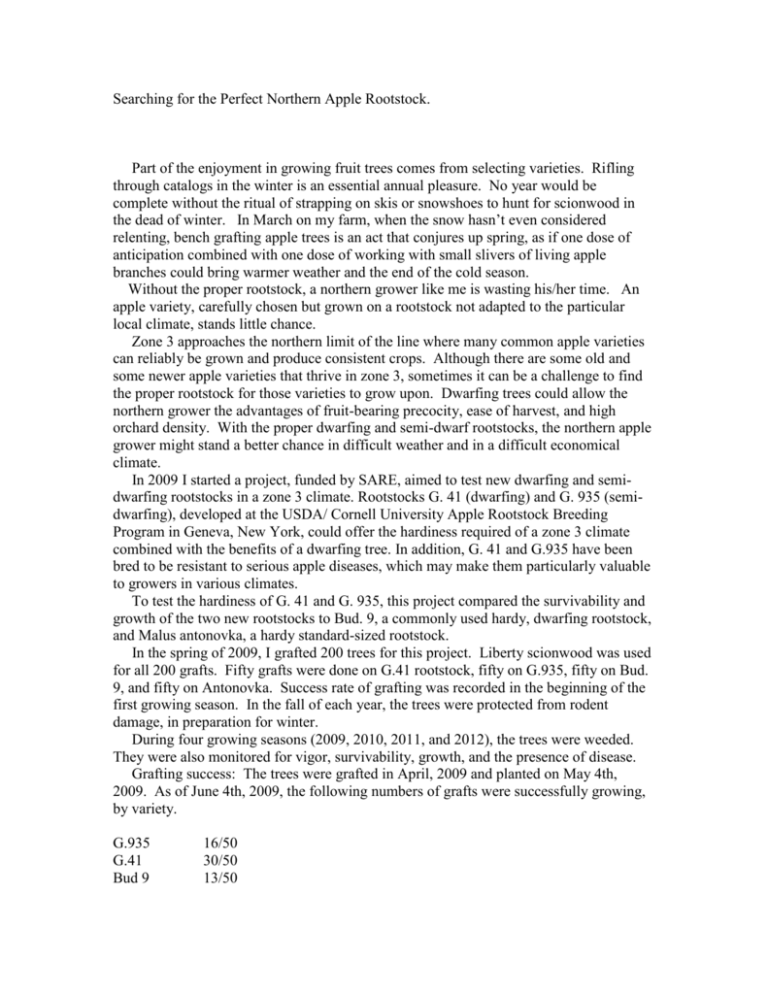
Searching for the Perfect Northern Apple Rootstock. Part of the enjoyment in growing fruit trees comes from selecting varieties. Rifling through catalogs in the winter is an essential annual pleasure. No year would be complete without the ritual of strapping on skis or snowshoes to hunt for scionwood in the dead of winter. In March on my farm, when the snow hasn’t even considered relenting, bench grafting apple trees is an act that conjures up spring, as if one dose of anticipation combined with one dose of working with small slivers of living apple branches could bring warmer weather and the end of the cold season. Without the proper rootstock, a northern grower like me is wasting his/her time. An apple variety, carefully chosen but grown on a rootstock not adapted to the particular local climate, stands little chance. Zone 3 approaches the northern limit of the line where many common apple varieties can reliably be grown and produce consistent crops. Although there are some old and some newer apple varieties that thrive in zone 3, sometimes it can be a challenge to find the proper rootstock for those varieties to grow upon. Dwarfing trees could allow the northern grower the advantages of fruit-bearing precocity, ease of harvest, and high orchard density. With the proper dwarfing and semi-dwarf rootstocks, the northern apple grower might stand a better chance in difficult weather and in a difficult economical climate. In 2009 I started a project, funded by SARE, aimed to test new dwarfing and semidwarfing rootstocks in a zone 3 climate. Rootstocks G. 41 (dwarfing) and G. 935 (semidwarfing), developed at the USDA/ Cornell University Apple Rootstock Breeding Program in Geneva, New York, could offer the hardiness required of a zone 3 climate combined with the benefits of a dwarfing tree. In addition, G. 41 and G.935 have been bred to be resistant to serious apple diseases, which may make them particularly valuable to growers in various climates. To test the hardiness of G. 41 and G. 935, this project compared the survivability and growth of the two new rootstocks to Bud. 9, a commonly used hardy, dwarfing rootstock, and Malus antonovka, a hardy standard-sized rootstock. In the spring of 2009, I grafted 200 trees for this project. Liberty scionwood was used for all 200 grafts. Fifty grafts were done on G.41 rootstock, fifty on G.935, fifty on Bud. 9, and fifty on Antonovka. Success rate of grafting was recorded in the beginning of the first growing season. In the fall of each year, the trees were protected from rodent damage, in preparation for winter. During four growing seasons (2009, 2010, 2011, and 2012), the trees were weeded. They were also monitored for vigor, survivability, growth, and the presence of disease. Grafting success: The trees were grafted in April, 2009 and planted on May 4th, 2009. As of June 4th, 2009, the following numbers of grafts were successfully growing, by variety. G.935 G.41 Bud 9 16/50 30/50 13/50 Antonovka 35/50 The G. 41 and Antonovka had significantly better grafting success than the other two varieties. Although every effort was made to acquire rootstock of comparable size and quality, the G. 935 was of larger diameter than the other rootstocks, requiring that the grafting was done a little differently. In addition, the Bud 9 rootstock lacked vigor from the start and did not grow well in general. Although these initial problems may have affected grafting success, we proceeded with the project with the belief that the project would still provide important data about the survivability and overall growth of the rootstocks in question, over the long term. Fatalities: Some rootstock died during the course of this project. As stated above, the Bud 9 rootstock arrived from our supplier nursery in poor condition. An unusual percentage of those rootstocks were dead on arrival or perished the first season. Deaths among the roostocks: 2009-- recorded September G.935 G. 41 Bud 9 Antonovka 5/50 2/50 12/50 0/50 2010—recorded August G.935 G.41 Bud 9 Antonovka 42/50 13/50 25/50 2/50 2011-- recorded August G.935 2/50 G.41 20/50 Bud 9 11/50 Antonovka 0/50 Total fatalities-- 2009-2010 G. 935 G.41 Bud 9 Antonovka 49/50 35/50 48/50 2/50 (98%) (70%) (96%) (4%) Total fatalities-- 2012 G. 935 G.41 Bud 9 Antonovka 49/50 47/50 48/50 2/50 (98%) (94%) (96%) (4%) Clearly, the dwarfing rootstocks have displayed some problems during the course of this project. Although the Antonovka performed as it has for several years on this farm, the dwarfing rootstocks suffered severe problems of survivability. One cause of this may have been a weed problem that developed in the nursery during 2009. Quack grass became more prevalent in the nursery and possibly inhibited the vigor of the rootstocks in general. The more vigorous Antonovka was more able to compete with the weeds. On the other hand, the rootstocks that did survive performed well, indicating that weed pressure may not have been the major problem. Severe winter weather is a problem for fruit nurseries in our climate. This project was intended primarily as a test of the winter hardiness of these dwarfing rootstocks. Because the winter of 2009/2010 was one of the warmest winters in our location on record, cold winter temperatures would not seem to be the cause of the high mortality of the dwarfing rootstocks. The winters of 2010-2011 and 2011-2012 have also been moderate in New Sweden. The problem may be tardiness in hardening off among the dwarfing rootstocks. Although the winters have not been very cold, G.935 and G. 41 may be slower to harden off in fall; the fall temperatures of Aroostook County may be causing a higher mortality among rootstocks not adapted to a zone 3 climate. 2009 was an unusual year in northern Maine, weather-wise. April and May were unusually warm and almost incessantly windy. June and July were exceptionally rainy. 2010 also had some unusual fluctuations in weather. There were long dry spells during the summer but no exceptionally cold weather during winter months. 2011 was the wettest summer on record in Caribou, Maine. Although the exceptionally wet weather may have caused even more problems among the dwarfing rootstocks, the Antonovka were unaffected. During 2012, the dwarfing rootstocks used in this project continued to perform poorly. Only one G. 935, three G. 41, and two Bud 9 survived, as of October 2012. In contrast, only two of the fifty Antonovka rootstock have died since 2009. This project established that though the rootstocks in question may have utility in other locations, they did not serve well or succeed in our northern, organic orchard. The Antonovka rootstock outperformed all of the dwarfing rootstock in this project. Although there are disadvantages to using standard rootstocks, the dwarfing rootstooks tested over the past four years did not survive well enough to be viable options in our orchard.
